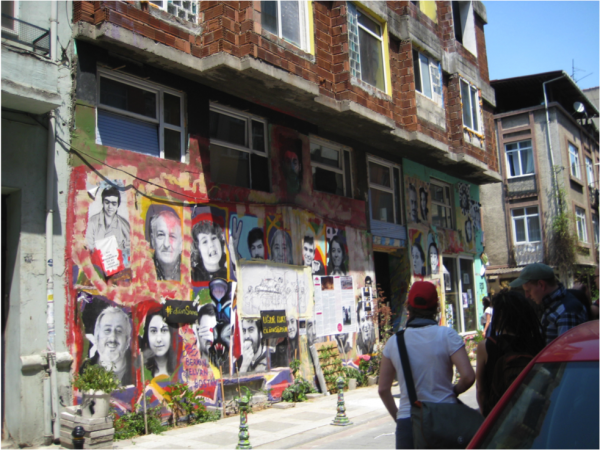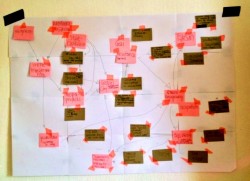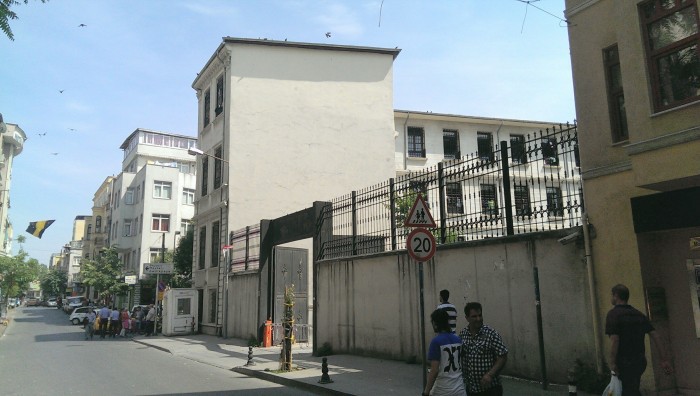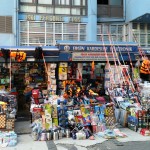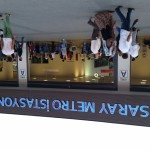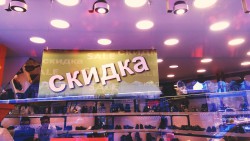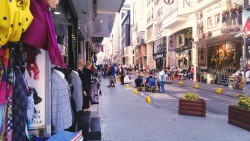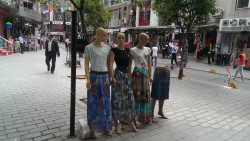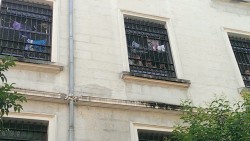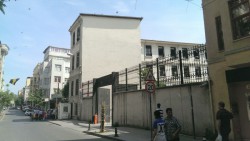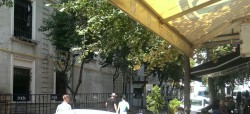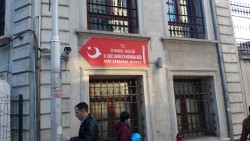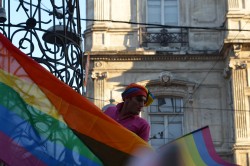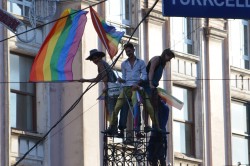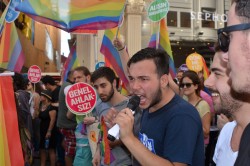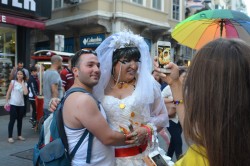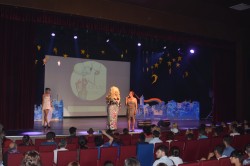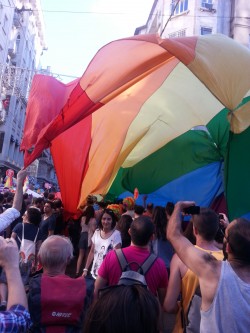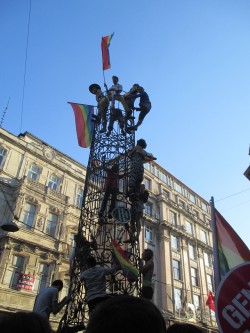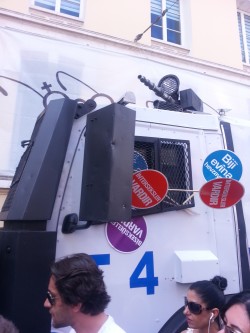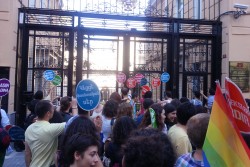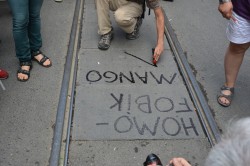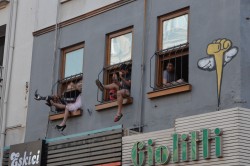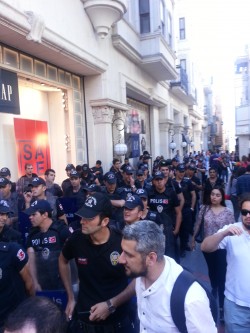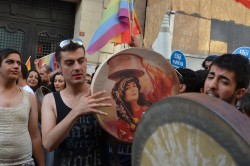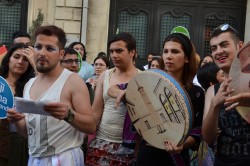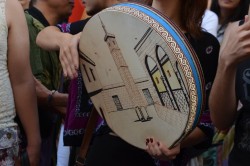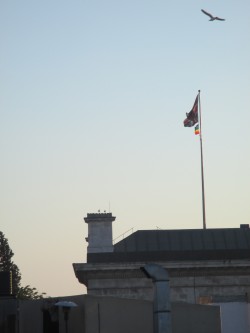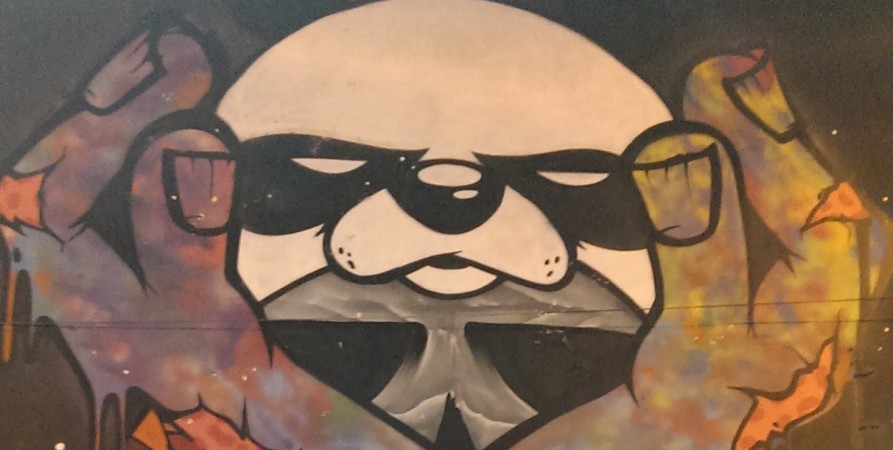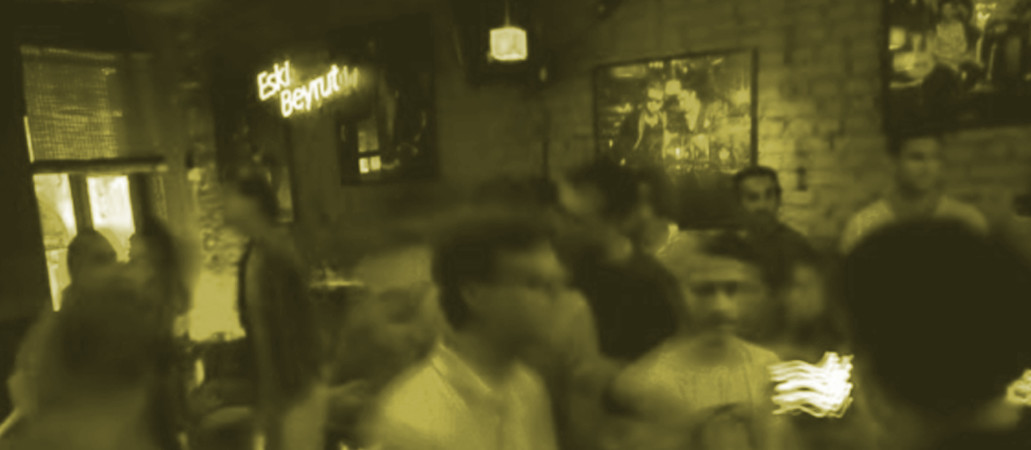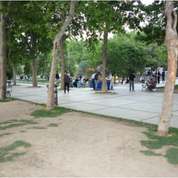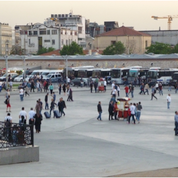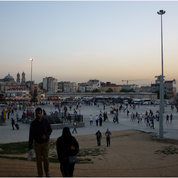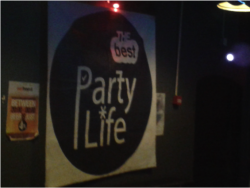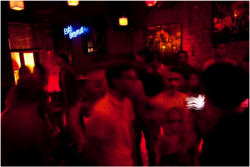As a research group, we were concerned with Istanbul’s economical, cultural and social transformation into a global city over the past 50 years as well as the various effects of this transformation. During our travel to Istanbul Nora Kühnert and Anne Patscheider conducted field research on squatting in Istanbul. The political controversies regarding common usage of urban space in everyday life as well as the political struggles stemming from immense changes of social life culminating in the Gezi Park protest in 2013 were the most obvious links between the projects that they visited.
By the changing shape of the Istanbul skyline, the rapid growth of production within the city since the Adalet ve Kalkınma Partisi (AKP) rose to power in 2002 is easily visible to the city’s inhabitants. Over the past two decades, Istanbul has undergone a neoliberal restructuring process. 1 Progressing globalization and digitalization have not only turned the city into a site absorbing surplus value – an epicenter of the accumulation of capital – they have also formed a new urban space in which traditional national spatial arrangements engage with those of the global digital age. 2
As a research group, we were concerned with Istanbul’s economic, cultural and social transformation into a global city over the past 50 years as well as the various effects of this transformation. During our travel to Istanbul from May 23, until May 31, 2014, we conducted field research on squatting in Istanbul. The political controversies regarding common usage of urban space in everyday life as well as the political struggles stemming from immense changes of social life culminating in the Gezi Park protest in 2013 were the most obvious links between the projects we visited.
In reference to David Harveys’ “Rebel Cities”, we call people’s occupation of Taksim Square “their right to the city” 3. In our field research, we intended to explore the political intentions of The Don Kişot Sosyal Merkezi, a squat in Istanbul German leftist magazines focused on, calling it a “follow-up movement to Gezi.” 4 We asked ourselves in which way squatting in Istanbul is connected to the 2013 Gezi Park protest movement and how it relates to neoliberal politics and urban transformation. Our first associations were with squatting forms to be found in European countries such as Spain or Greece familiar to us. There, activists occupy houses in order to live in them. Reading David Harvey helped us understand the Gezi Park movement. Therefore, we presumed that his theory might also be of help in grasping squatting in Istanbul. Hence, we strove to comprehend the possibilities and difficulties connected to squatting as a resistance practice: 5 for example, we were concerned with the composition of squatting groups as well as their political aims and demands.
Research
We conducted our main research at Don Kişot Sosyal Merkezi. This social center was set up by a network of squatting groups in Istanbul as well as related political agents encouraged by economical processes beyond the squatting scene. We hoped that brief stays at Don Kişot Sosyal Merkezi, the Caferağa Dayanışması, the Komşu Kafe and Samsa Bay, participant observation and guided interviews would provide insight into the inner configuration of Istanbul’s squatting scene. We interviewed people involved at the time of our research, asked them to draw mind maps of the squatting scene and questioned them about its constellation as well as their opinions on perspectives of resistance in Istanbul. In order to get an overview of the connections and networks of the squatting scene, we extended our fieldwork to interviewing a political activist who was a member of the 1970’s leftist movement. We also added attending lectures by Tuna Kuyucu 6 and Biray Kolluoğlu 7 at Boğaziçi University on neo-liberal politics in Istanbul and its effects on urban transformation and the social life in the city.
Fußnoten:
- 1 Kullouğlu, Biray/Candan, Ayfer Bartu: Emerging Spaces of Neoliberalism: “A gated Town and a Public Housing Project in Istanbul”, in: New Perspectives on Turkey 39 (2008) fall, pp. 5-47, here p. 5. ↩
- 2 Sassen, Saskia: The Global City – The De-Nationalization of Time and Space, http://90.146.8.18/en/archiv_files/20021/E2002_018.pdf (last accessed July 2015). ↩
- 3 Harvey, David: Rebel Cities. From The Right to the City to the Urban Revolution, London/New York, NY: verso books 2012. ↩
- 4 Umul, Fatma: “Istanbul-Yeldegirmeni. Wir sind alle Don Quijote”, in: AK- Analyse und Kritik. Zeitung für linke Debatte und Praxis 590 (2014), http://www.akweb.de/ak_s/ak590/21.htm (last accessed July 2015). ↩
- 5 In the field of European Ethnology, the term “practice” is used to describe a certain way of investigating cultural phenomena. Classifying squatting as a resistant practice, we took a look at the past of resistance in Istanbul and how it is presently done in daily situations in the squats. Our definition of resistant practice refers to Henri Lefebvres and denotes an active or resistant intervention in the social production of space challenging the dominant production of space and temporarily creating a space of its own in opposition to it. ↩
- 6 Lecture by Assoc. Prof. Tuna Kuyucu at Boğaziçi, University Istanbul, Department for Sociology: Commodification and Country Ownership in Istanbul, May 26, 2014. ↩
- 7 Lecture by Assoc. Prof. Biray Kolluoğlu at Boğaziçi, University Istanbul, Department for Sociology: Global City Istanbul: Urban Transformation and ‘Gated Communities’, May 26, 2014. ↩
